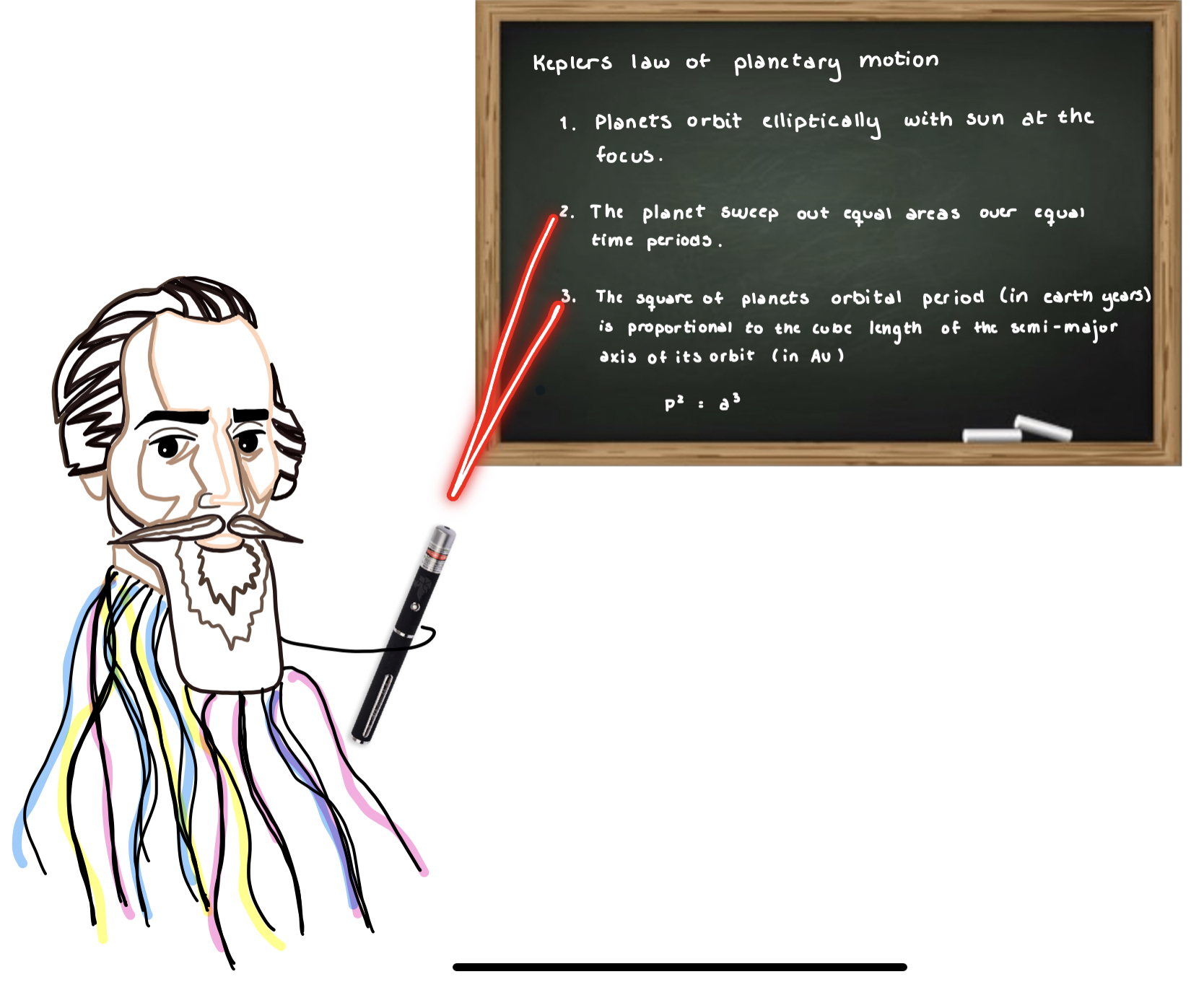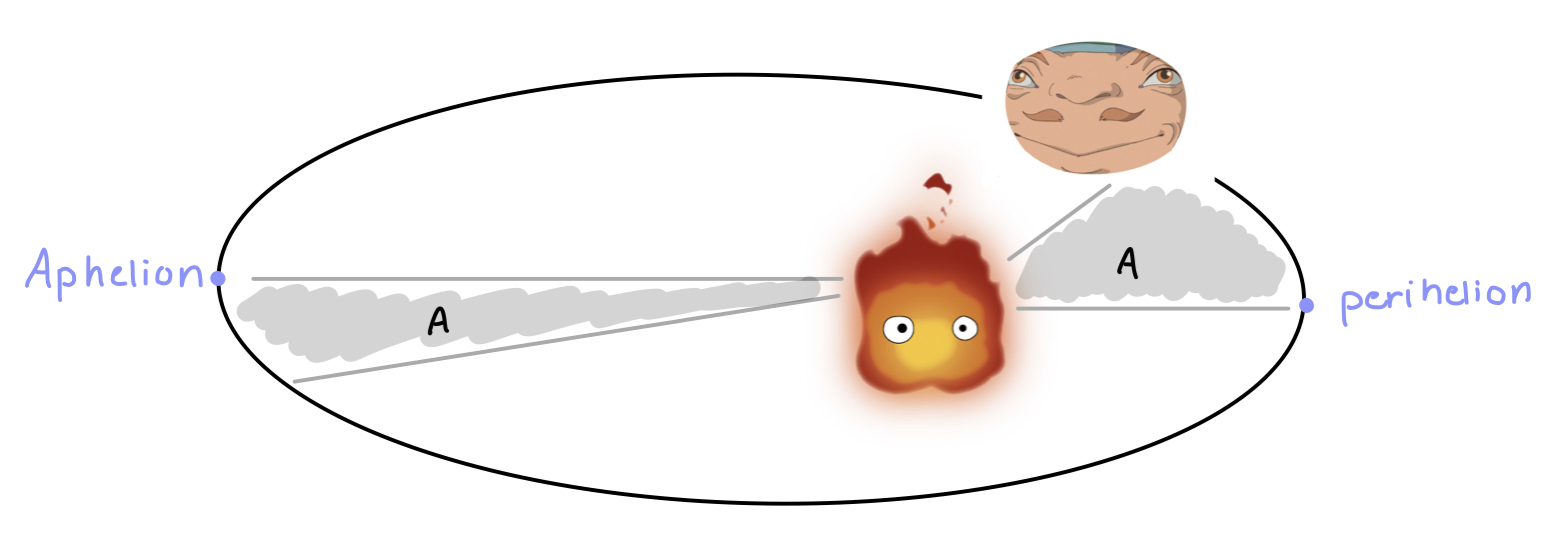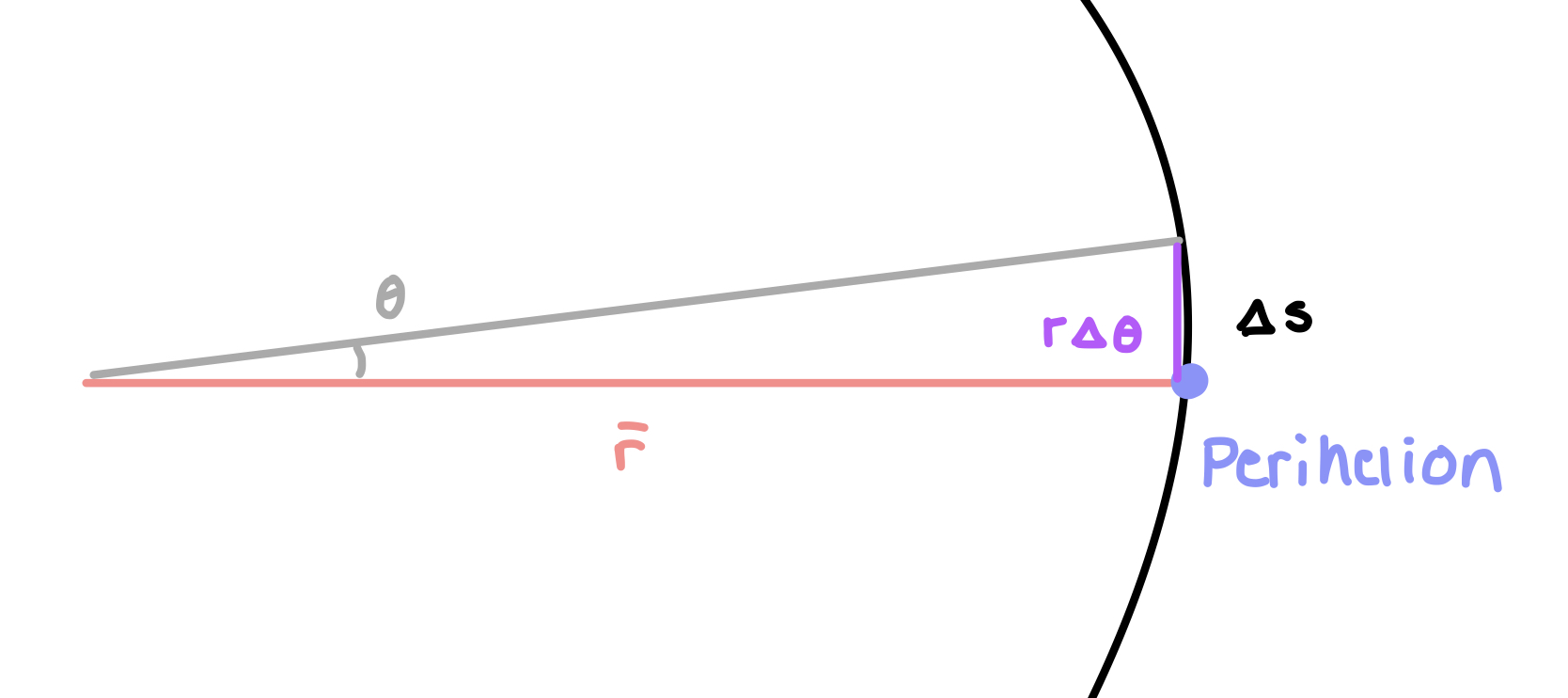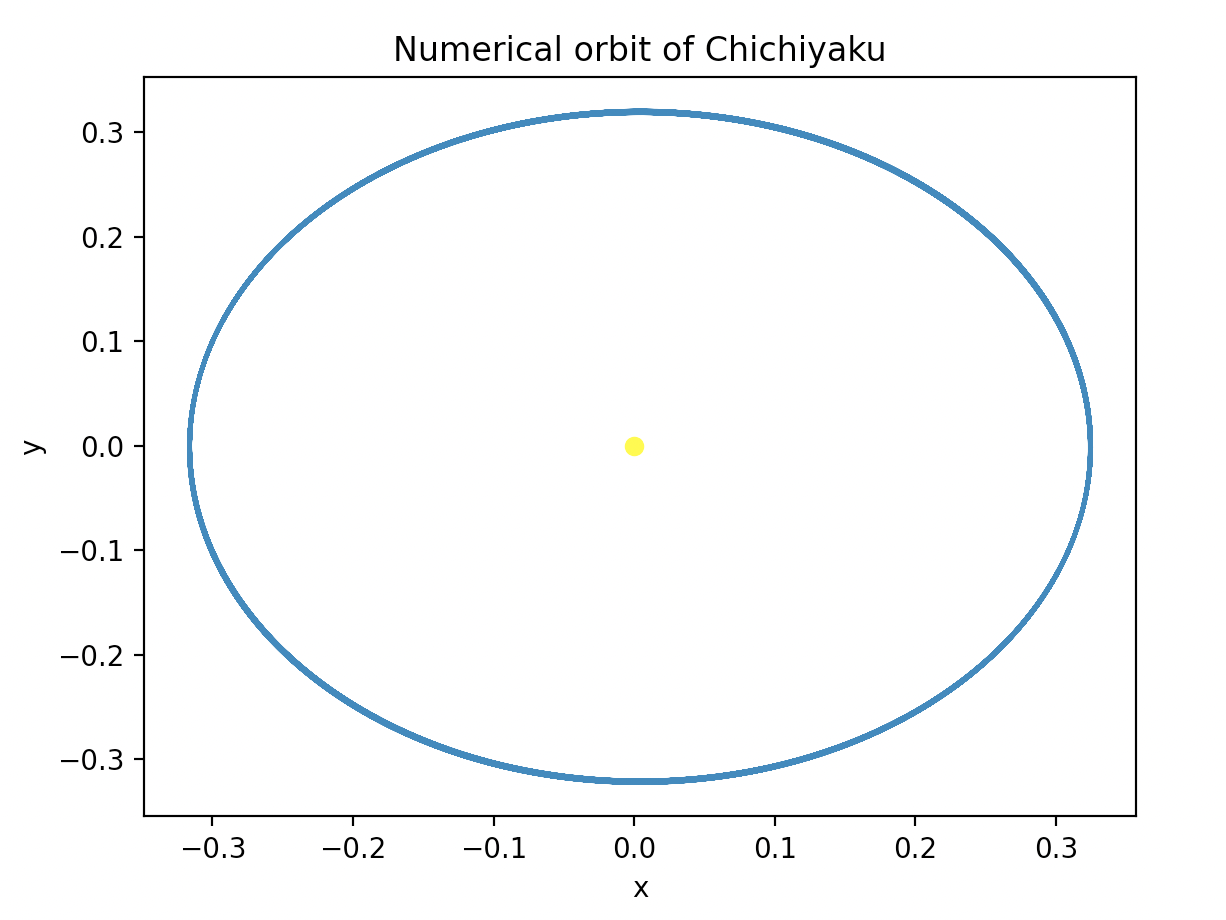The answer to last post was: No, you cannot trust whatever the computer spits out. We need to FACT CHECK!
A great man once said: Numbers are nothing if you don't know about their error. Meaning that presenting our orbit simulation is not enough, we need to check how accurate the orbits are.
Let me remind you of J(elly) Kepler's second and third law

Based on Kepler's laws we will be
- Comparing two areas swept out by our home planet and the distance travelled one where the planet is close to aphelion and one where the planet is close to perihelion. Check the mean velocity the planet travelled with (Kepler's second law).

The reason we check near aphelion and perihelion is based on a thought from our last post:
"the planet must orbit faster near the sun in order to sweep the same area when it is further away."
Naturally, we chose aphelion and perihelion because they are the furthest points from each other. The consequence of this will be the planet velocity near perihelion is significantly higher than near aphelion. In order to calculate the area, we have decided to approximate using right triangles (similar to proof of Kepler's second law), where \(A = \frac{1}{2}r^2d\theta\)

To calculate the distance travelled we put on our astronaut suit and walk along the orbit. Within the time period the area was swept out, we take small even steps and measure how long each step was and add them.
For mean velocity we take a step, stop, measure the velocity at that step and put it in the "bank" containing all velocities. We keep doing this until our time period run out. After that we divide the number in the bank with number of steps.

Now let's take a look, shall we?
Area is somewhat the same with a difference under 10-5. This is good, we wanted to check how accurate our home planet orbit was to Kepler's second law. Great, we are doing good so far!!
Distance travelled when the areas were swept out is also similar... hmm... Not quite what we wanted? Distance near perihelion is slightly longer. The difference should have been slightly bigger since we have an ellipse.
Mean velocity is... the same??? The planet should orbit a faster near perihelion compared to aphelion to sweep out the same area at both points.
Something is not correct here. Time to investigate!!

Oh, shit! I found out what went wrong. The distance to both perihelion and aphelion is almost the same...
Then the sun... THE SUN. I FORGOT TO SAY THAT THE SUN IS PLACED IN THE ORIGIN OF OUR SYSTEM, MEANING COORDIANTES (0, 0). HOW COULD I FORGOT TO TELL YOU THAT?!
Anyways, this means the sun must be centered in our orbit??

Hold up, hold up. Chichiyaku's orbit has an eccentricity of \(\approx 0. 014\). As a consequence of this, our orbit must be very similar to a circle.
*checks numerical plot of home planet orbit* Rebecca: and will you look at that... almost a circular orbit.
What if I print the position of Calcifer the sun? It should be somewhat right in between perihelion and aphelion.

This explains why the distance to perihelion and aphelion is almost the same. How the same area is swept out during the same time period, over the same distance travelled with the same mean velocity. THE ORBIT IS ALMOST A FUCKING CIRCLE!
Karl: LANGUAGE!
Rebecca. Sorry, I'm just so happy to finally have proven how Kepler's law holds up for orbital motion of our home planet.
Anyways, one more law...
2. Checking if all our orbits are consistent with Kepler's third law and if there is a measurable difference between Kepler's original version and Newton's corrected version.
With the planets rotational period, semi- major axis, mass and sun mass, we have enough information to check if the orbits are consistent with Kepler's third law (and Newton's corrected version. We will do this by checking if both sides of the equation is equal.
These equations:
\(P^2 = a^3\) (Kepler's)
\(P^2 = \frac{4\pi^2}{\gamma(m_1+m_2)}a^3\) (Newton's)
Since there are two equations we want to find the difference between them. We do that by taking the absolute value of one subtracted from the other, in order to reduce the numerical error.

As you can see, NONE of our orbits made it... Why did this happen?
1) A little bug in our numerical program. We notice that the planets furthest away from the sun cause a bigger numerical error. It is quite common for computers to have a machine error.
2) We are jellyfishes! Sorry to disappoint, but this is a learning curve for us as well. Bear with us!
